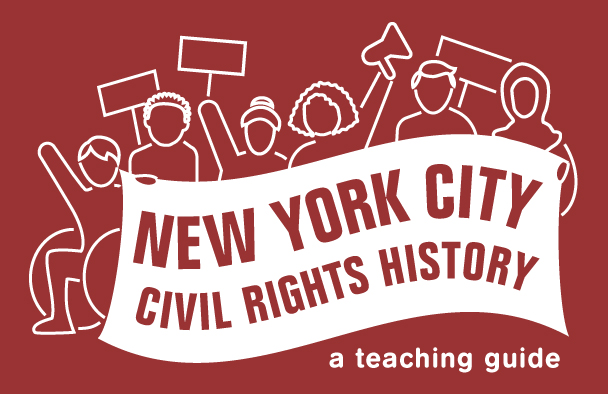- New York City never desegregated its schools
Black New Yorkers protested the segregation of their schools throughout the 19th and 20th centuries. In the 1954 Brown v. Board of Education decision, the Supreme Court ruled that school segregation by race violated the US Constitution.1 The New York City Board of Education talked a lot about racial desegregation in the 1950s and 1960s but made few actual changes, even after major activism by Black and Puerto Rican New Yorkers and those working in solidarity with them.2
Segregation or exclusion of Disabled students continued as well. The Supreme Court’s ruling in Brown did not mention Disabled students, but the case paved the way for the courts to recognize the rights of Disabled students several decades later.3 Legal recognition of these rights helped increase Disabled students access to schooling, but many policies and practices in special education continued to segregate students in and between schools.4
Since 1970, New York has operated District 75, a separate school district only for Disabled students. Like many special education programs within schools or classrooms, this district is predominantly Black and Latinx students, illustrating continued segregation in terms of race and ability.5 Six decades after Brown, a team of researchers identified New York State’s schools as the most racially segregated in the country, and NYC one of the most segregated districts.6
-
Brown v. Board of Education of Topeka, 347 U.S. 483 (1954), https://catalog.archives.gov/id/1656510 ↩︎
-
Matthew Delmont, Why Busing Failed: Race, Media, and the National Resistance to School Desegregation (Oakland: University of California Press, 2016); Christopher Bonastia, The Battle Nearer to Home: The Persistence of School Segregation in New York City (Palo Alto: Stanford University Press, 2022). See also: Matthew Delmont, Why Busing Failed, accessed April 10, 2024, whybusingfailed.com. ↩︎
-
Individuals with Disabilities Education Act. Pub. L. No. 94-192, § 611, 89 Stat.773 (1975). ↩︎
-
Keith A. Mayes, The Unteachables: Disability Rights and the Invention of Black Special Education (Minneapolis: University of Minnesota Press, 2023); Francine Almash, “New York City ‘600’ Schools and the Legacy of Segregation in Special Education,” The Gotham Center for New York City History, June 21, 2022, https://www.gothamcenter.org/blog/new-york-city-600-schools-and-the-legacy-of-segregation-in-special-education. ↩︎
-
Cheri Fancsali, “Special Education in New York City: Understanding the Landscape” (Research Alliance for NYC Schools at NYU Steinhardt, 2019), https://steinhardt.nyu.edu/research-alliance/research/publications/special-education-new-york-city ↩︎
-
John Cuscera with Gary Orfield, “New York State’s Extreme School Segregation: Inequality, Inaction, and a Damaged Future” (Los Angeles: UCLA Center for Civil Rights/Proyecto Derechos Civiles, 2014), https://www.civilrightsproject.ucla.edu/research/k-12-education/integration-and-diversity/ny-norflet-report-placeholder/Kucsera-New-York-Extreme-Segregation-2014.pdf ↩︎
